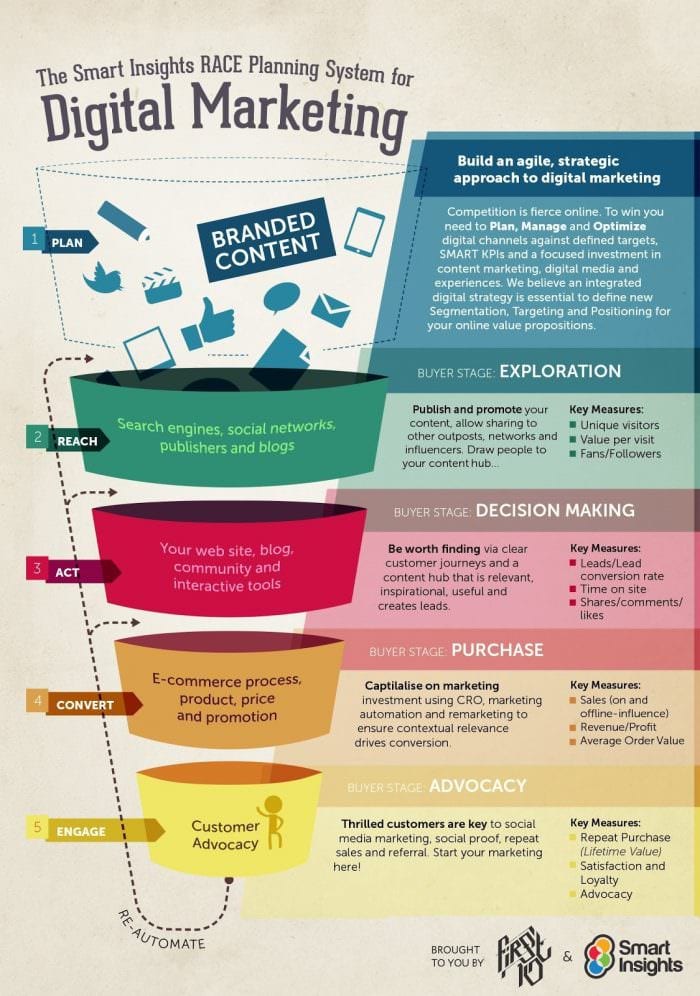Increase leads and sales by using our full range of recommended tools and techniques to audit your content marketing effectiveness
Many content audits are limited by just reviewing SEO or making an inventory of existing content. These are both important, but to improve your content to make it more valuable to your business AND your audience, we recommend a complete 360-degree content audit [link] covering all aspects of content effectiveness.
Our content audit is different since it helps you get more value from your content by improving each of these crucial elements of content effectiveness:
- SEO – increase rankings and technical quality of content for SEO
- Content coverage – a traditional inventory of types of content to identify new content needed
- Impact of content on leads and sales by integrating Google Analytics data and reviewing UX to make improvements to calls-to-action
- Content mapping to personas through the customer journey
- Audience opinions and feedback on content
- Quality of content for language, e.g. spelling, readability, and clarity
- Social media, media interactions and sharing
Complete our Quick Win on how to successfully do a 360 degree content marketing audit.
What's the benefit of a 360-degree content audit?
If you’re asked these questions or you are defining what YOU need to get out of a content audit, then think about the improvements you’re looking to make across the funnel.
Here are some of the many practical benefits of a content audit grouped by different parts of the marketing funnel of the Smart Insights RACE planning framework.
The insight from the content audit will show you opportunities to:
Reach
- Boost SEO ranking and visits by A. Creating new content to target keywords and B. Optimising existing content to improve ranking or attract visits from a broader range of keywords using an SEO keyword gap analysis.
- Identify opportunities to share popular and effective content via more acquisition channels, e.g. PR, Social media or paid media
Act
- Boost leads from new landing pages by using content mapping to identify and then create new landing pages and content to appeal to different personas or different stages of the buyer journey. See how in our Quick Win guide to boosting website leads
- Optimize existing landing pages to reduce bounce rate and increase lead conversion rates
- Improve content quality by A. Removing or B. Consolidating / merging content
- Identifying improvements to User Experience to feature content more clearly on customer journeys using better calls-to-action (CTAs)
Convert
- Convert more leads to sales by identifying top content types which influences conversion using the VQVC metrics explained in the Quick Win guide
- Identifying which content to recommend to nurture prospects via email or on-site personalization
Engage
- Identify content which encourages customer loyalty and sharing
- Improve content quality which encourages advocacy and sharing
Making the business case for investment in content
For a structured business case, you may need more formal benefits. The data and insights from an audit provide a strong business case to internal stakeholders for initial or further investment in content resources. Investment can be difficult to justify particularly as much of the contribution made by content to the sales funnel may not be immediate, particularly in the case B2B, where sales cycles are long and complex. Not presenting a strong enough business case is often cited as the number 1 reason for a lack of content investment and thus the content audit plays a critical part in strengthening the case for content investment Let’s be clear about the business benefits of the content audit:
- Baseline for current content. An audit serves as a valuable reference point for all existing content during the content management and development process. In practice, it unifies the content process making it easier to project manage and deliver on the objectives
- The audit can be used for managing content updates in future. It provides a highly efficient central database for managing third-party writers and content contributors
- Prioritisation priorities can be defined. The content audit provides valuable insights on where you need to prioritize
- Customer journey analysis and mapping. It offers a thorough analysis of all the deeper content, often ignored, where unknown problems in the customer journey may be hidden. Well designed and visible top layers of website content might be hiding poor content deeper below which is obstructing the commercial potential of your content assets and your ability convert customer interested in your business
- Valuable content. It provides insights and understanding about which content is valuable and is performing well against the business objectives. Valuable content can be defined as
- Useful to your audience of business colleagues or clients. It educates, informs and entertains and as a result gets read, shared and is acted upon, particularly if it is:
- Relevant and timely
- Clear and compelling: it tells a story that people understand and
respond to
- High Quality: It is interesting, well produced with substance
- Accurate: it is accurate, underpinned by accurate data
- Can we repurpose any of the existing or out of date content? This approach can be hugely valuable for content previously discarded and can immediately add value
source https://www.smartinsights.com/content-management/content-marketing-planning/360-degree-content-marketing-audit/

No comments:
Post a Comment